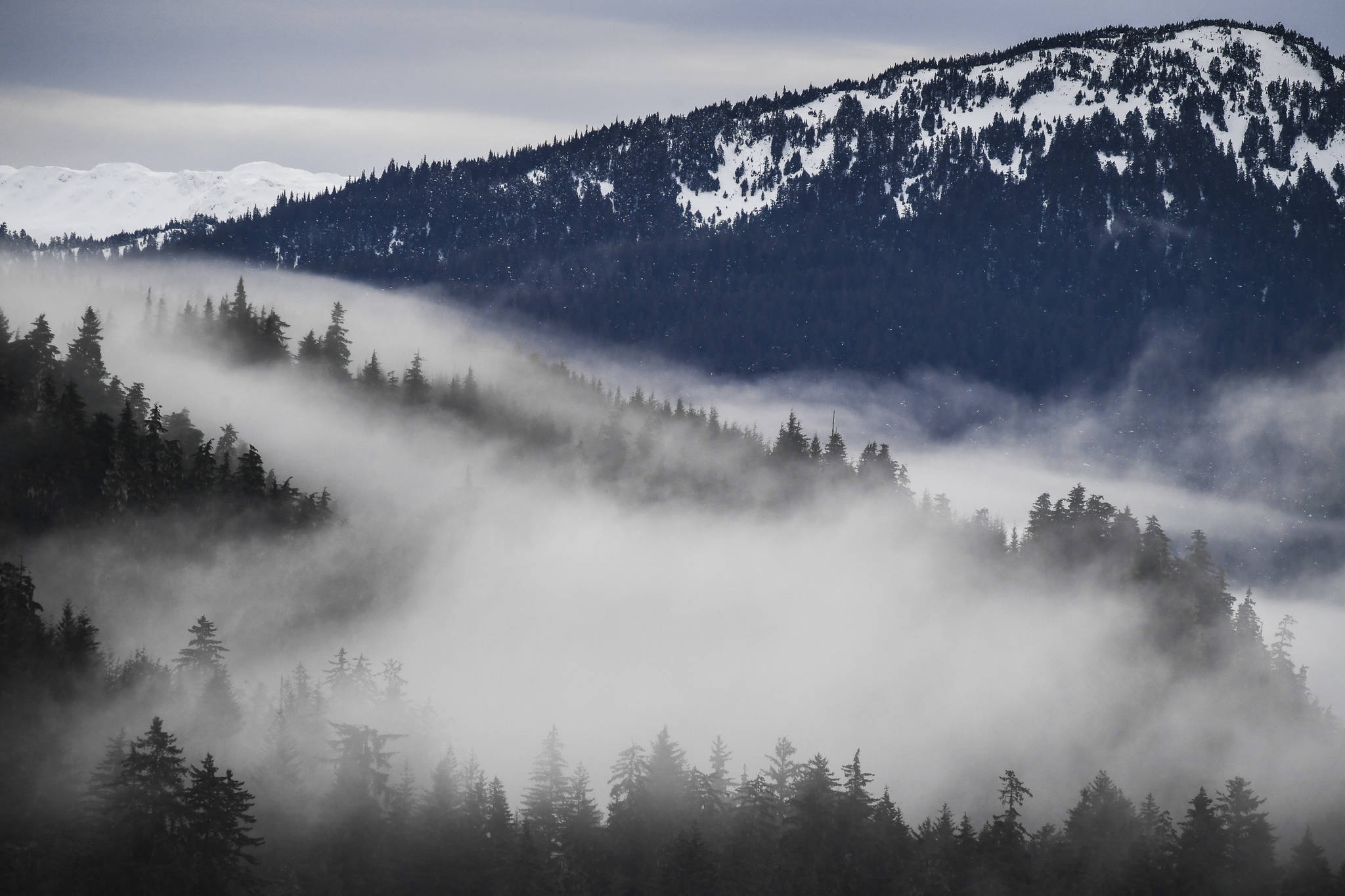A recently released mapping project seeks to show the importance of the Tongass National Forest not necessarily in terms of fishing, tourism or dollars but in carbon.
The Oregon-based Geos Institute published an analysis of the Tongass on Dec. 16, and it highlights the importance of the National Forest as a “carbon sink,” which the report says has global climate implications.
“The Tongass is part of a global network of temperate rainforests that make up ~2.5% of the world’s total forest coverage,” the report says. “But these rainforests have exceptional carbon stores for their relatively small spatial extent and are critically important in climate regulation collectively and individually.”
Using data sets from the U.S. Forest Service’s Forest Inventory and Analysis program and Pacific Northwest Research Station, Dominic DellaSala, chief scientist at the Geos Institute and Brian Buma at the University of Colorado, Denver created an analysis of the carbon density of the Tongass.
“When you do a hike in an old-growth forest,” DellaSala said in an interview with the Empire, “you’re looking at a big carbon stick.”
[‘Elf’-centered: JDHS brings musical based on hit movie to its stage]
Trees naturally absorb carbon from the atmosphere and convert it to oxygen as part of their natural life cycle, DellaSala said. Excess carbon is stored in the roots and soils of old-growth forests.
“Just like Amazonia is the lungs of the planet,” DellaSala said, “the Tongass is the lungs of North America.”
When asked for comment on this story, Forest Service regional spokesperson Dru Fenster told the Empire in an email the appropriate staff members were not available to give sufficient response because of holiday leave.
Preserving the Tongass, he said, is essential as a deterrent against climate change, or what DellaSala called, “climate catastrophe.”
But the Tongass as a bulwark is currently under threat by the Trump Administration’s plans to rollback the Roadless Rule on the Tongass, according to DellaSala.
The U.S. Department of Agriculture, which oversees the Forest Service, is currently considering six alternatives to the Roadless Rule that currently applies to 9.2 million acres of the Tongass. The rule prohibits the harvest of timber and the construction or reconstruction of roads in certain areas.
Opponents of the rule say it places undue burdens on industries in the region, not just timber, and makes it difficult for local communities to exploit their natural resources. That doesn’t necessarily mean things like mining, though that is an industry that would benefit from lifting the roadless rule.
Critics have also complained the rule limits infrastructure projects, particularly for renewable energy sources such as hydroelectric and geothermal power.
But the timber industry does factor in to considerations about the roadless rule. Sen. Lisa Murkowski, R-Alaska, has expressed her support for seeing the timber industry grow in Southeast Alaska as has Gov. Mike Dunleavy.
On Dec. 16, Dunleavy spoke to conservative think tank the Heritage Foundation in Washington, D.C. and during the question-and-answer session told the crowd the timber industry had once provided a large number of well-paying jobs.
But there was a way for the timber industry and the roadless rule to coexist according to DellaSala. Trees absorb and store carbon throughout their lifetime, and when those trees are cut down they release that carbon into the atmosphere. The older the tree the more carbon is released DellaSala said.
If the timber industry were to transition to “young growth” trees, or trees that are roughly 70 years or younger, timber could be harvested with less impact to the environment.
“They’re planning to log 43,000 acres,” DellaSala said, referencing the land that would be available for timber harvest if the rule were lifted. “The emissions from that kind of logging would be equivalent to 4 million vehicles on Alaska’s highways.”
In the next few years trees that were planted after clear cut logging that took place in Alaska in the 1950s and ‘60s will be old enough to harvest, DellaSala said.
“We’ve been really championing the transition strategy,” he said. “You can have (timber) jobs in a way that is going to be sustainable.”
That is potentially possible, but not necessarily financially viable according to Owen Graham, executive director of the Alaska Forest Association, a timber industry group.
“Because they’re making lumber out of these lower grade trees, they have these highly mechanized mills,” Graham said. “You can physically do it but you won’t make enough money.”
The equipment needed to harvest young-growth trees was very expensive, Graham said. With the amount of land the Forest Services currently allows to be harvested, there just isn’t enough volume to make a profit.
Furthermore, Graham said, the market for small diameter logs is different that the one for larger trees. There aren’t currently facilities that can manufacture smaller trees into a sell-able product in Southeast Alaska, Graham said.
[Sleeping it off: An inside look at Juneau’s program for chronic inebriates]
“You’d have to be exporting small diameter logs to China or other regions that have that infrastructure,” he said. “Then you lose those year-round manufacturing jobs.”
But DellaSala thinks the transition should be considered more in the face of climate change.
“With climate consequences we need to get the transition back on the rails,” DellaSala said. “The Tongass is one of a kind and the future of Alaska depends on what happens in the Tongass.”
• Contact reporter Peter Segall at 523-2228 or psegall@juneauempire.com.

